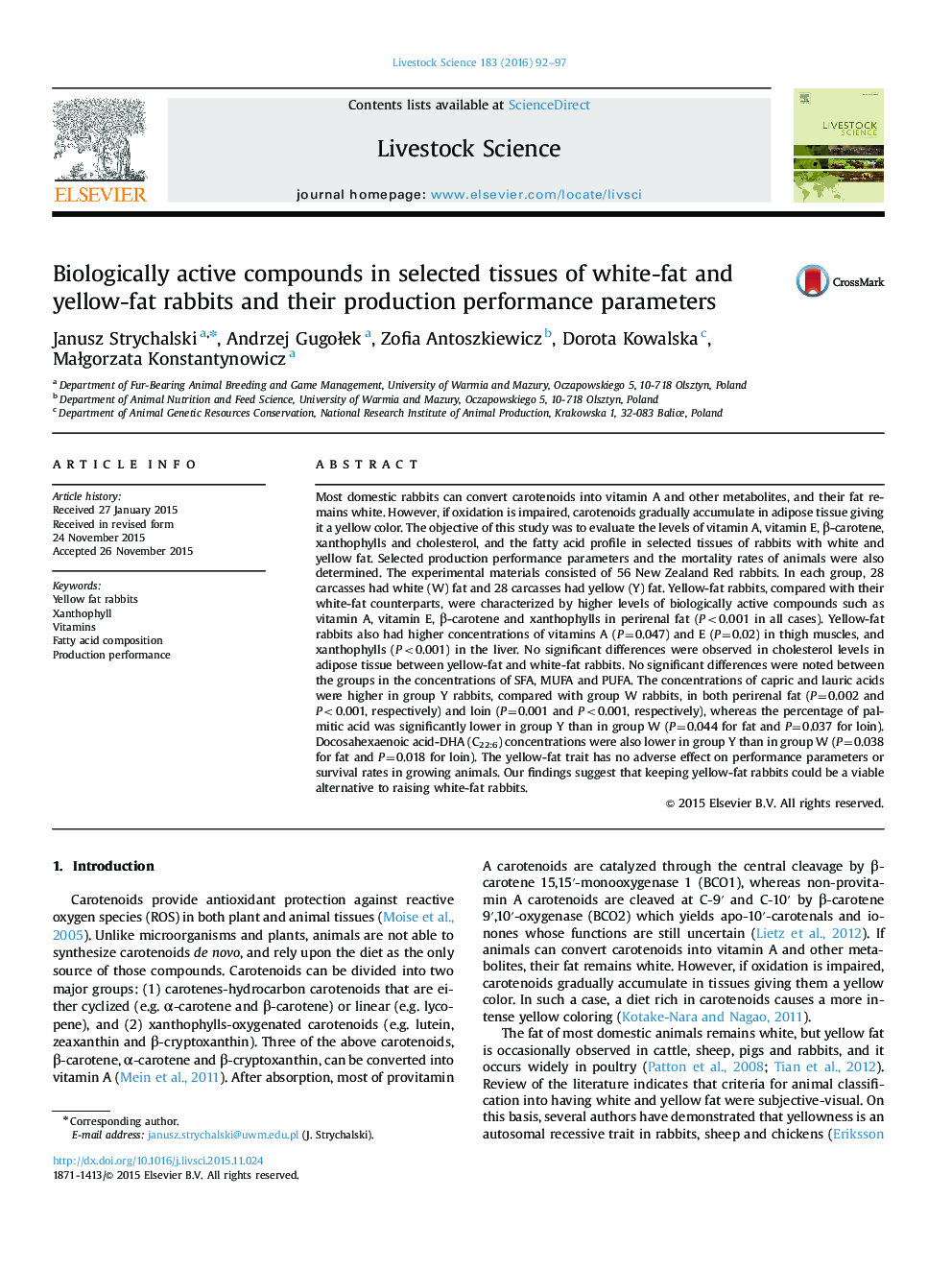| کد مقاله | کد نشریه | سال انتشار | مقاله انگلیسی | نسخه تمام متن |
|---|---|---|---|---|
| 2446961 | 1553949 | 2016 | 6 صفحه PDF | دانلود رایگان |
• Yellow-fat rabbits had higher levels of biologically active compounds in fat.
• Yellow-fat rabbits had higher concentrations of vitamins A and E in thigh muscles.
• Yellow-fat rabbits had higher concentrations of xanthophylls in the liver.
• Performance parameters were similar in yellow- and white-fat rabbits.
• Survival rates were similar in yellow- and white-fat rabbits.
Most domestic rabbits can convert carotenoids into vitamin A and other metabolites, and their fat remains white. However, if oxidation is impaired, carotenoids gradually accumulate in adipose tissue giving it a yellow color. The objective of this study was to evaluate the levels of vitamin A, vitamin E, β-carotene, xanthophylls and cholesterol, and the fatty acid profile in selected tissues of rabbits with white and yellow fat. Selected production performance parameters and the mortality rates of animals were also determined. The experimental materials consisted of 56 New Zealand Red rabbits. In each group, 28 carcasses had white (W) fat and 28 carcasses had yellow (Y) fat. Yellow-fat rabbits, compared with their white-fat counterparts, were characterized by higher levels of biologically active compounds such as vitamin A, vitamin E, β-carotene and xanthophylls in perirenal fat (P<0.001 in all cases). Yellow-fat rabbits also had higher concentrations of vitamins A (P=0.047) and E (P=0.02) in thigh muscles, and xanthophylls (P<0.001) in the liver. No significant differences were observed in cholesterol levels in adipose tissue between yellow-fat and white-fat rabbits. No significant differences were noted between the groups in the concentrations of SFA, MUFA and PUFA. The concentrations of capric and lauric acids were higher in group Y rabbits, compared with group W rabbits, in both perirenal fat (P=0.002 and P<0.001, respectively) and loin (P=0.001 and P<0.001, respectively), whereas the percentage of palmitic acid was significantly lower in group Y than in group W (P=0.044 for fat and P=0.037 for loin). Docosahexaenoic acid-DHA (C22:6) concentrations were also lower in group Y than in group W (P=0.038 for fat and P=0.018 for loin). The yellow-fat trait has no adverse effect on performance parameters or survival rates in growing animals. Our findings suggest that keeping yellow-fat rabbits could be a viable alternative to raising white-fat rabbits.
Journal: Livestock Science - Volume 183, January 2016, Pages 92–97
